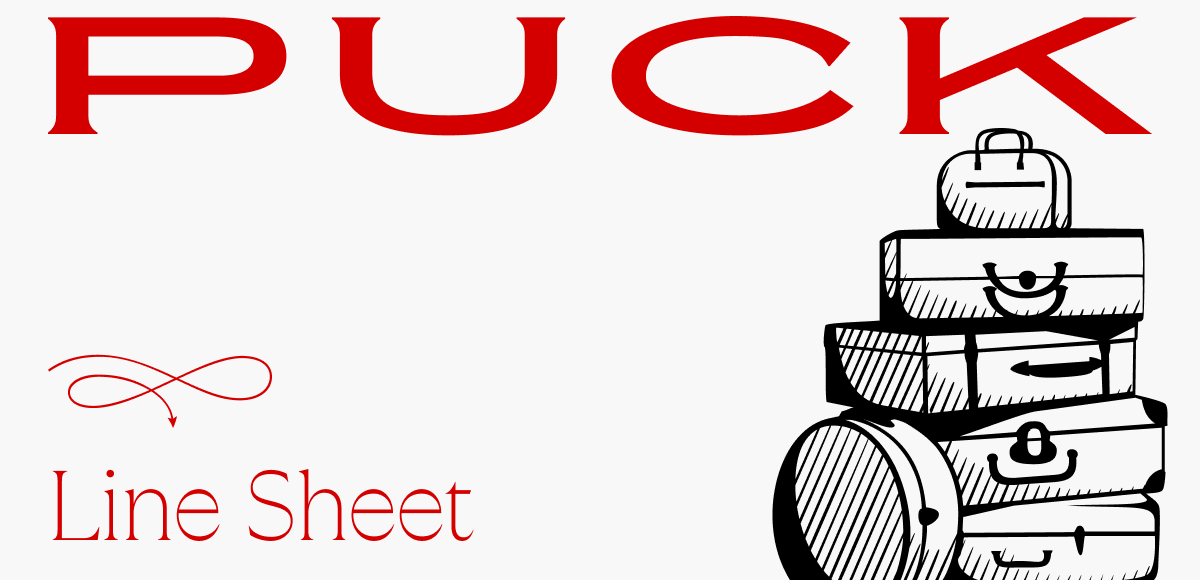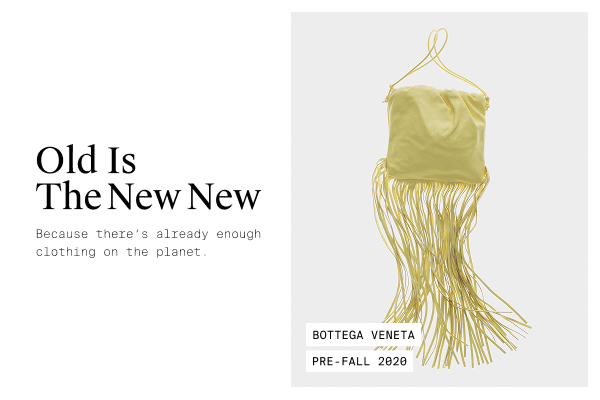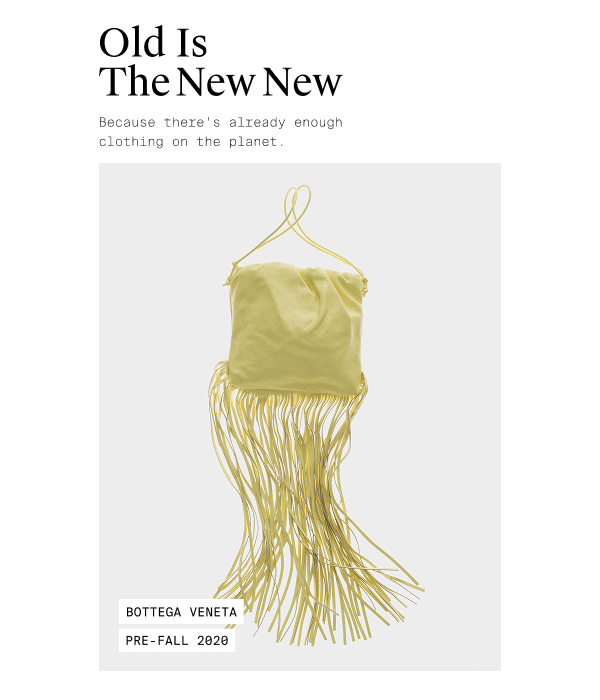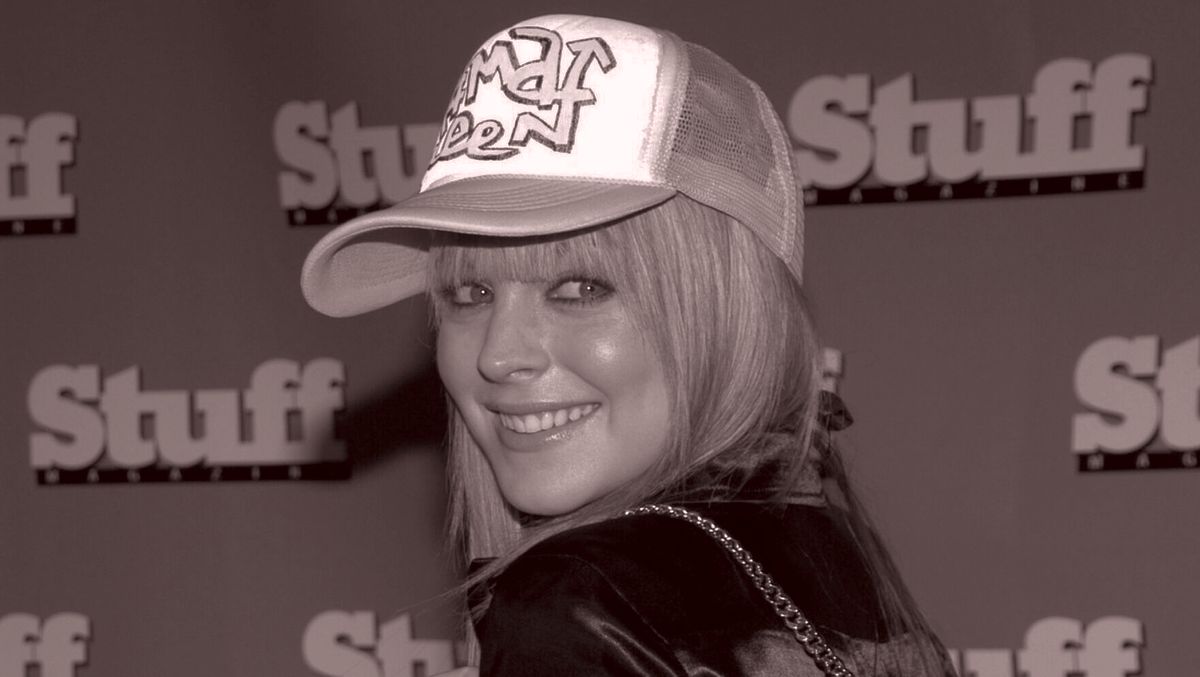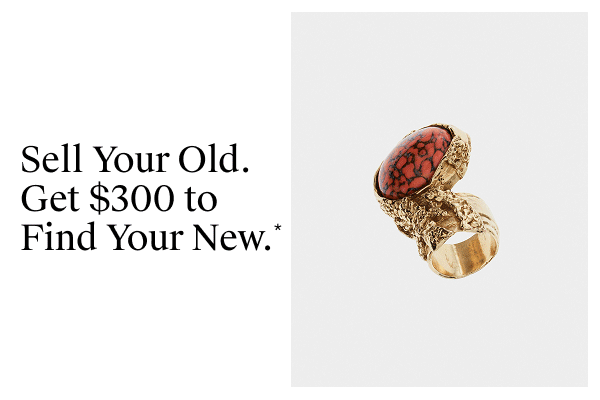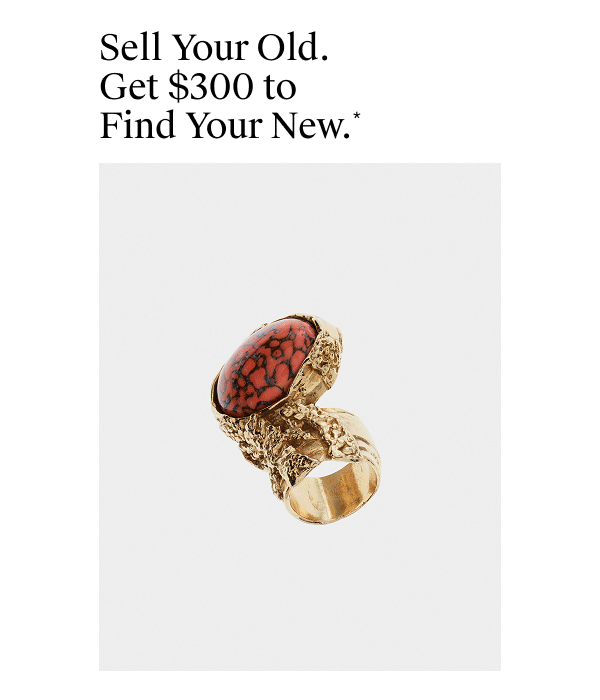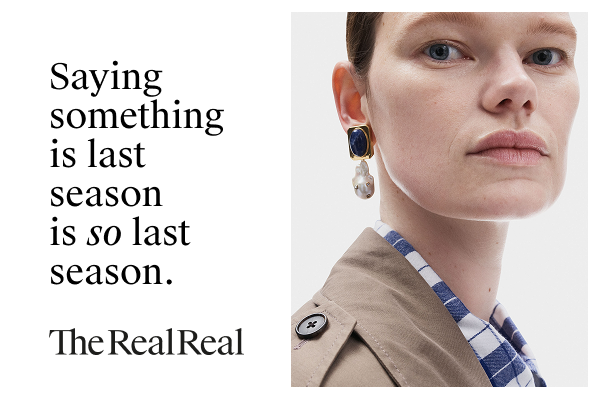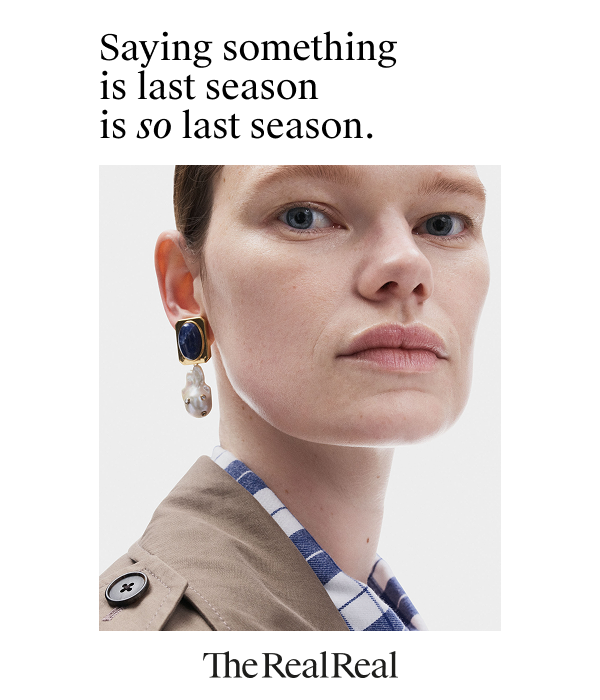Hi, and welcome back to Line Sheet. Remember to send me all your questions for a special Spring
Break mailbag next week. Nothing (about fashion) is off-limits. I need them by E.O.D. Sunday!!
Today, Sarah “SShapiro@puck.news” Shapiro is back to reflect on the week that was in shopping and retail, including the rise of trucker hats as a cheesy crafting fetish (proud to say I did not participate in the first go-around, when they were often paired with Clarks and
Diesel jeans). Plus, Sarah tracks the demise of the wallet, explains some tariff stuff you haven’t learned anywhere else but actually need to know (I promise, really), and shares notes on the latest brand collaborations to hit the market. There’s something to be said about this strategy of collaboration flooding, where one brand/entity partners with dozens of other brands to launch something new. First, Barbie did it. Then, The White Lotus. And now… Bon Iver?
🚨
Programming note: I’m on The Powers That Be today with Peter Hamby, undoubtedly already a proud owner of a Bon Iver x Todd Snyder cashmere beanie, to discuss the tariff fallout and Glossier’s valuation drop.
Listen here and here.
Mentioned in this issue: Brandy Melville, Adam Selman, Jonathan Saunders, Liberation Day aftershocks, Todd Snyder,
Zac Posen, LoveShackFancy, Christophe Lemaire, trucker hats, Nike, Hollister, Hermès, Vanity Fair, and many more…
|
|
|
A MESSAGE FROM OUR SPONSOR
|
The RealReal is where Real fashion people shop. Why? It’s the world’s most
trusted and beloved reseller of authenticated luxury goods. They have everything from vintage Saint Laurent and archival Balenciaga to stuff you practically just saw on the runway. So why buy something new when you can just buy something new-to-you?
Right now, you can get $25 off your first purchase by visiting therealreal.com/fashionpeople or any store.
|
|
|

|
Sarah Shapiro
|
|
Three Things You Should Know…
|
- Show designers the
money: This week, two more staples of the modern mall hired name-brand designers to boost their own name brands. Adam Selman is heading to Victoria’s Secret (in more of a marketing role, but still) and Jonathan Saunders is running the design studio over at H&M’s relatively upmarket stablemate, & Other Stories.
This is just
the latest in a string of similar trade-pub-worthy appointments. And we should call them for what they are: a fabulous paycheck, often in the low-seven figure range. For the past 20 years, top design talent have been encouraged to launch their labels out of fashion school, and it’s never been more difficult to run an indie brand—let alone make it profitable. (Both Saunders and Selman, for instance, ran their own well-regarded labels for years before smartly throwing in the hat.) Corporate jobs
offer a level of financial gain and security that being an early-stage entrepreneur never could.
But it’s not like this is a totally new proposition, even if it feels like it, with Zac Posen overhauling Gap and Clare Waight Keller being brought in to tweak Uniqlo in the past two years alone.
Unlike high-low collaborations—which have been happening since the early 1980s, when Halston designed a line for JCPenney—these are steady
gigs that require designers to show up and make changes that will increase sales, exposure, and/or move the share price upward. And there’s a precedent here: It’s an open secret that Phoebe Philo was behind a Euro-specific line for Gap between her gigs at Chloé and Céline. Christophe Lemaire, who joined Uniqlo in 2016, designs a sub-brand, Uniqlo U, but is also in charge of much of the Fast Retailing–owned company’s research and development. Fast Retailing also
invested in Lemaire’s namesake line, which has ballooned to $100 million in sales since they announced the partnership.
What do the retailers get out of it? Sometimes, it’s just a good designer who will make the producer better. (That’s certainly true in the case of Lemaire and Waight Keller.) Sometimes, it’s a marketing move. There’s no way GapStudio is a volume play. Most of Posen’s job is actually managing and executing on the brand vision: hiring stylists, photographers, and
commercial directors.
- More Liberation Day aftershocks: Yes, there is a pause on the “reciprocal” tariffs for every country except China. But whether or not you have some sort of connection to Chinese production—and you probably do—there are going to be repercussions from Trump’s trade war. An executive from a multibrand online retailer told me they were considering a significant pullback on holiday buys, due to recession concerns, and looking at immediate orders to adjust or cancel.
Brands, in turn, may start taking hits to their purchase orders.
Alas, many founders of smaller companies told me this week that they lack the infrastructure—subsidiaries to absorb landed costs, biz ops and legal to uncover workarounds—that larger companies can draw on to mitigate tariff shocks. Meanwhile, the tech startup Swap, a logistics platform for Shopify brands, has been preparing for this
moment since Trump 1.0, in 2018, when they started plotting ways to aid small-to-medium-size businesses with their import strategies. This week, Swap launched a service called Clear, which will partner with brands to provide shipping logistics and other services at scale.
While most fall/winter orders have already been placed, many U.S. brand executives have been working with their suppliers to hold product overseas, or to lower minimum delivery sizes—an indication, perhaps, that foreign
manufacturers really need their business, too. Rachelle Hruska MacPherson, the founder of Lingua Franca, told me that their factories can hold the yarn for future cashmere deliveries if necessary.
What many consumers—or really anyone not neck-deep in the supply chain—don’t realize is that brands are already paying product-specific duties on top of tariffs. The
Harmonized Tariff Schedule (HTS) classifies all traded products (like cotton t-shirts vs. synthetic t-shirts) to determine the duties applied to each. Consider the difference between a women’s woven cotton dress and a women’s woven cotton nightgown, two identical products in construction and material whose marketed end use nevertheless determines vastly different duties (11.8 percent for the dress, 2.7
percent for the nightgown). The new Trump tariffs are paid on top of this, and the end result is a nesting doll of taxes and money owed on all this merchandise.
- And finally…: Some new stores and collabs you may have missed: Rixo, the dress brand from the U.K., opened its first U.S. store at 19 Prince Street. In the latest in hotel-fashion brand tie-ups,
Staud x St. Regis is raffia heavy. Bon Iver has launched more than two dozen collabs tied to the release of Justin Vernon’s first album in six years, including a now-sold-out Todd Snyder salmon-colored sweater, and a zone-flooding 27 food and beverage
collabs, including one with tinned-fish category crusher Fishwife. There’s also another LoveShackFancy
collaboration, this one with Hunter. (LSF is a licensing machine.)
|
|
|
News and notes on the latest Gen Z retail trends, the NikeSkims partnership, and the rapidly
shrinking market for wallets in an Apple Pay world.
|
|
|
This week’s channel checks uncovered a few interconnected trends on the minds of retailers, including the
resurgence of trucker hats (yes, really) and the decline of wallets in the tap-to-pay era. The merchants I spoke to were also laser-focused on what teens are buying, in particular—because in retail, what kids wear today doesn’t stay in high school. Brand relationships in those formative years can stick around for life.
Of course, as we all know, fashion is cyclical, too. Someone asked me recently why the sidelines of kids sports’ games are now fields of green “Ciao”
trucker hats, which made me wonder whether Clare V. headgear has reached peak saturation with soccer moms. You may remember the Ed Hardy and Von Dutch trucker hats of the late ’90s and early aughts. The latest fad incorporates a D.I.Y. element, where the fun isn’t just in Stoney Clover Lane–style customization
but decorating them afterward, with a glass of wine in hand (or a Shirley Temple, for the kids)—a sip ’n’ paint party, but for hats.
|
|
|
A MESSAGE FROM OUR SPONSOR
|
Did you know that your consignment has at least a 33% chance of preventing
a shopper from buying something new? That means you’re helping to curb demand for items that create waste and contribute to emissions just by selling what you’re no longer using.
Start selling now by visiting therealreal.com/fashionpeople.
|
|
|
In fact, my crafty Southern friends tell me that trucker hat parties are a thing across the South,
hosted at boutiques throughout the region, with some shops like Mess Hall franchising the concept. The trend doesn’t end there. On Etsy, D.I.Y. kits abound, and at resort boutiques like BROdenim (with spots in the Hamptons,
Martha’s Vineyard, Greenwich, Nantucket, and Cape Cod), customers gladly pay $70+ to personalize their caps with iron-on patches. The trend is so hot that one mom planning her teen daughter’s party recently encountered a nationwide neon hat shortage, because the supplier had hosted so many events. (This specific crisis was averted when new hats were flown in from China… although the next mom might not be so lucky, given Trump’s tariffpalooza.)
The Southern sorority
aesthetic fits perfectly into consumers’ current obsession with personalization, Instagram-worthy experiences, and having something to TikTok about. Stanley cups are on the way out as the must-have accessory—these days, it’s all about the lid.
|
Elsewhere in the teen fashion world, Piper Sandler’s spring 2025
survey reveals some fascinating trends in footwear, athleisure, and big-box shopping destinations—as well as the youth’s enduring power to drive the box office. Nike remains the footwear king but is losing ground, according to the report, particularly with female shoppers, with “mindshare” dropping below 40 percent for the first time since 2020. The upcoming
NikeSkims collab (as first scooped by Lauren here) could be just what the brand needs to recapture young women’s attention.
In apparel, there’s been a surprising changing of the guard. Lululemon,
once the unchallenged favorite among teen girls with money to spend, has fallen to third place behind Hollister and Brandy Melville. (Really? Did nobody watch the Brandy Hellville documentary?) Perhaps the athleisure trend is cooling, as teens return to more styled,
casual, and denim looks—which would explain why Hollister is expanding, with new locations popping up nationwide after 15 percent year-over-year growth for 2024 (including one store opening soon in the burbs of California’s East Bay).
Retail preferences are evolving, too. Walmart is gaining exclusive shoppers across all income brackets, while Target is seeing declines—a concerning trend for a retailer that, as I
pointed out earlier this week, is struggling to maintain its cool factor with young consumers and their parents. This mirrors Target’s broader challenges with declining foot traffic, in addition to the snag that Rachel has noted with its Ulta shop-in-shop sales getting cannibalized by stand-alone Ultas.
|
|
|
While we’re tracking brand shifts, the Minecraft movie’s box office explosion shows that teens and
tweens still have significant cultural impact and spending power when something genuinely connects with them. Indeed, as Scott Mendelson reported for Puck on Monday, video games are the comics of the younger generation.
|
When the first iPhone came out in 2007, fashion watch departments—brands like Swiss Army, Michele Watches,
and all those other Fossil brands—pretty quickly noticed a drop in sales. Consumers ultimately stuck with luxury watches (like Rolex, Cartier, and Patek Phillipe), but otherwise there was no need for a separate timepiece; you could get the
hour from the phone that hasn’t left your hand in nearly two decades.
Channel checks this week reveal Apple’s newest victim: wallets. The evidence is right there in the handbag department, where there’s shrinking space, or often none at all, for SLGs—industryspeak for small leather goods. Where wallets do show up on the floor is in the shop-in-shops for designer brands like Bottega
Veneta, Gucci, Louis Vuitton, etcetera. But silk scarves, previously a shrinking category, have started encroaching on the abandoned wallet cases; they’re a lower-cost luxury item, perfect for twisting around handbag handles à la the Hermès
twilly, or to be worn as a neckerchief.
Several buyers I spoke to this week confirmed my findings. Just like the iPhone cut into watch sales, the Apple Wallet is displacing the leather kind. Remember when checkbook wallets were a thing? These days I carry only a slim card case, and I know I’m not the only
one. Many Gen Zers will even just put a card slot on the back of their phones for a required ID. Who needs a George Costanza–style storage case when you can use your phone to get on the subway and MetroCards will stop working by the end of the year? At least the SLG department also has tiny bag charms and
AirPod cases.
|
On the tariffs mess: “No matter what happens now, all those people on the inauguration dais
look like spineless fools not even 90 days in… They’re all getting clobbered in every way. Smiling sycophants getting clobbered. Share prices tanking, tariffs crushing margins, consumer confidence sinking, and the biggest luxury market about to suffer a steep demand drop that will erase the pandemic bump when they least need it.” —An investor
On the Vanity Fair job listing: “Why didn’t they post the salary? Don’t you have to include the salary or salary range in
New York state?” —A lot of readers
[Lauren’s take: The job listing is written in British English and is for a “global role,” so my guess is that it was a loophole that allowed them to avoid disclosing the salary range. And honestly, I don’t blame them, because it’s going to be so vastly different based on who they end up hiring. I’m sure there’s a ceiling, but underneath it could fluctuate wildly.]
On the challenge of the Vanity Fair job itself:
“It’s like selling a week-old fish.” —An editor
On Kallmeyer: “So, I never got to the store, but I ordered the denim and they are fantastic! Honestly better fit and quality than Nili! I ordered the column leg jean in the tea-stain color, and it literally fit like a glove. Wore it the minute I received it. I also ordered the Clemence jeans in white. It is so good
to have an option other than Nili. I love my Nili pants, almost all in my closet are Nili, but I will be buying more from Kallmeyer. Product is excellent quality, customer service is quick, and it is made in Portugal and in NYC. Got to love a brand that knows where to make great product.” —A business advisor
On Rachel Strugatz on Glossier: “I don’t usually
respond to newsletter emails but I just had to pass on some praise. The writing in this newsletter is incredible. I went back to read it multiple times not because I was having difficulty comprehending it, but because it is so damn good. This is why I am more than happy to pay for a subscription where someone is actually writing.” —A satisfied Line Sheet reader
|
Have a great weekend,
Lauren
P.S.: We are using affiliate links because we are a business.
We may make a couple bucks off them.
|
|
|
Need help? Review our FAQ page or contact us for assistance. For brand partnerships, email ads@puck.news.
You received this email because you signed up to receive emails from Puck, or as part of your Puck account associated with . To stop receiving this newsletter and/or manage all your email preferences, click here.
|
Puck is published by Heat Media LLC. 107 Greenwich St, New York, NY 10006
|
|
|
|
